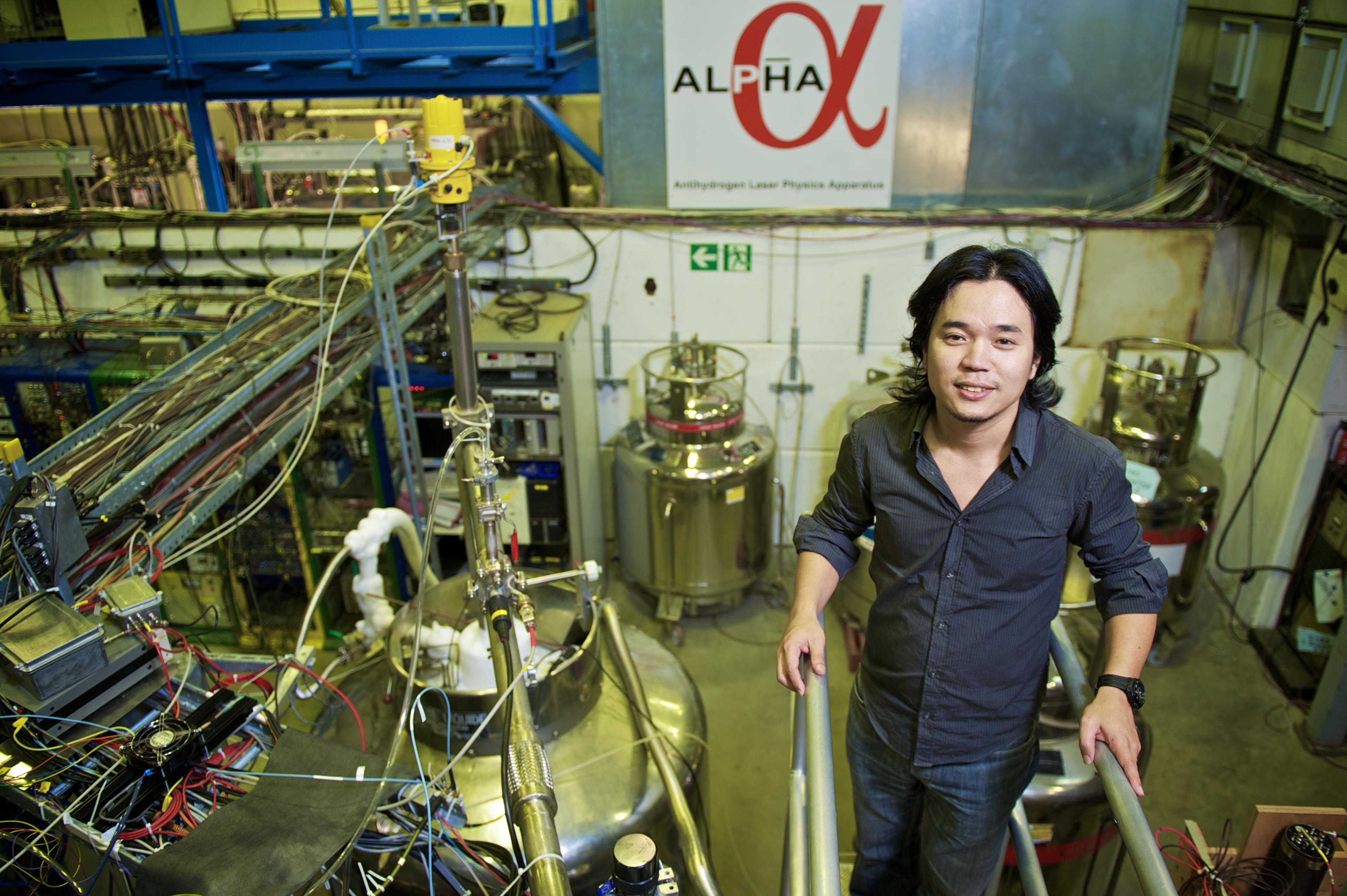
“One of the motivations to study antimatter is to understand the evolution of the Universe,” said Makoto Fujiwara in his Richard V. Ericson lecture at Green College, excerpted in the College’s most recent annual report. “We believe that when the Universe began in the Big Bang, equal amounts of matter and antimatter were created. However, if we look at the Universe today, we hardly see any antimatter at all. What happened to antimatter is one of the biggest questions in modern physics.”
Fujiwara is what he described in his lecture as a “suitcase physicist”, travelling back and forth from the CERN Particle Physics Centre in Switzerland, currently the only place in the world where it is possible to generate the stream of antiprotons which are essential ingredients of the antihydrogen atoms Fujiwara studies. His work is part of the ALPHA Collaboration, an international team of 50 scientists from 16 institutions in eight different countries. ALPHA’s goal is to investigate and understand the symmetry between matter and antimatter by studying antihydrogen—atoms made of antimatter.
ALPHA spent almost eight years leading up to 2010 attempting to create an experiment demonstrating the stable confinement of antihydrogen. When antihydrogen atoms had been created before in the ATHENA experiment, they had annihilated—when antimatter and matter meet, they annihilate one another and become pure energy. The breakthrough of ALPHA in 2010 was being able to contain and stabilize antihydrogen not just for minutes, but for hours, in a contraption of the team’s own invention that Fujiwara described as a “magnetic bottle.”
Stabilizing the antihydrogen allowed for measurements to be taken that were previously impossible. Precision measurements on antihydrogen atoms rely on the speed of movement of the atoms: the slower they move, the more precisely their properties can be measured. ALPHA slows the movement of antihydrogen atoms using laser cooling. “Laser cooling of normal atoms is a technique developed over 40 years ago,” Fujiwara explained to me by email, “and it literally revolutionized atomic physics.” ALPHA was able to use this laser cooling technique on antimatter for the first time.
“In this work,” Fujiwara wrote, “we have demonstrated the ability to manipulate antimatter using laser light, and this, I believe, will open up entirely new possibilities in antimatter research, which otherwise were even unthinkable.”
I asked Fujiwara whether there was a moment when he realized that the experiment would succeed and what it felt like to realize this.
“Scientific discovery is very often a gradual process,” he responded, “and there is not necessarily a single moment. You should be the biggest critique of your own work (you know its possible weaknesses more than anyone else in the world), so it is good to always have some level of doubt. Having said that, for this work, there was a moment where the signal we got were fairly convincing, so I felt ecstatic. However, it took nearly two years of work after this moment, to reach the stage where the result was published in Nature.”
Curious about the more personal aspects of what it’s like to grapple with such fundamental questions about the origins of matter and antimatter, I asked Fujiwara what it is like to be able to actually be able to observe and learn about such essential building blocks of our universe. “This may be something that is quite commonplace to you,” I wrote, “but I can’t quite imagine that it ever gets old.”
“To some extent, you sort of get used to the idea,” he replied. “Especially, new students take it almost for granted that we can trap and study antimatter atoms. But every now and then, I think to myself in front of our experiment, recalling that we may be the only people in the entire Universe who are trapping and studying antimatter atoms, and the antimatter is just in front of you being trapped for hours (although you can’t really see it in your eyes)!”
Currently, Fujiwara is spending several months at CERN on his sabbatical where they are focused on building a new experiment called ALPHA-g that hopes to measure the gravitational force acting on antimatter for the first time. According to Einstein’s theory of gravity, gravitational forces should act on antimatter in the same way it acts on matter. That is to say, if you dropped antimatter in a vacuum it should fall, not float. This has never been tested and could be one of the breakthroughs of the ALPHA-g experiment.
Fujiwara is also involved in developing a new project at UBC and TRIUMF called HAICU—as in haiku—which stands for Hydrogen Antihydrogen Infrastructure at Canadian Universities. HAICU’s aim is to develop future technologies for antimatter, using normal matter as a proxy.
Fujiwara is the spokesperson—which in particle physics refers not only to being a public face but also the leader of the scientific team—for ALPHA-Canada and is often tasked with explaining a topic that goes far beyond most people’s general knowledge of particle physics. This, he told me, is an important aspect of his work, aside from trapping and cooling antihydrogen.
“I think there are a number of reasons. First, our research is basic research to advance knowledge, with no immediate commercial applications, and as such, it is funded almost entirely by the tax-payers money. So we have a responsibility to communicate our exciting findings to the public. Second, I think it is important to inspire the public, in particular, young people, about science. Third, by speaking to the laypersons, and trying to explain to them what we are doing, you often learn new things, or encounter new perspectives.”
The recording of the Richard V. Ericson Lecture can be viewed on Green College's YouTube channel here.
by: Jane Willsie, Department of English Language and Literature, UBC; Green College Work Learn Content Writer, 2020-21